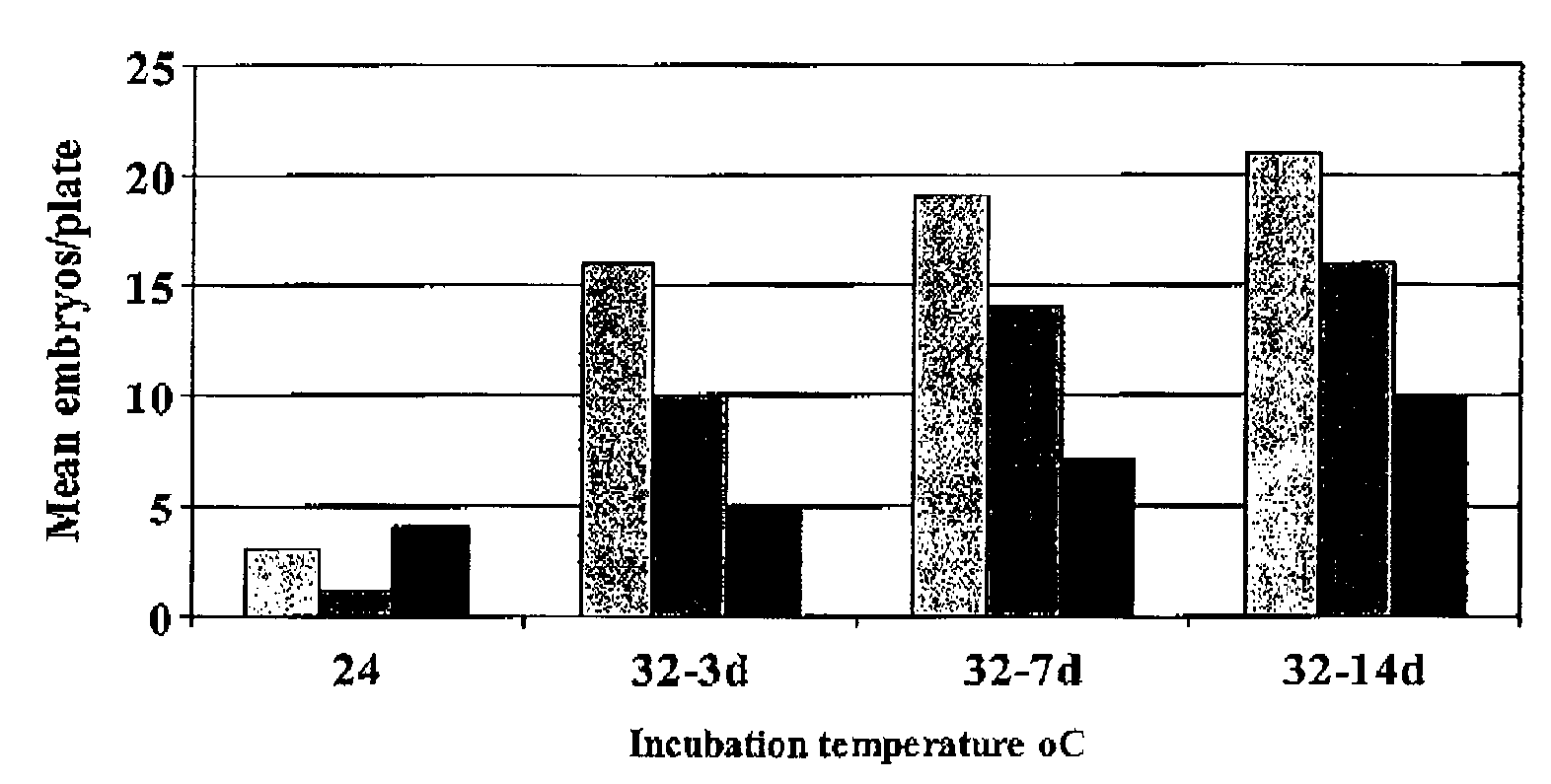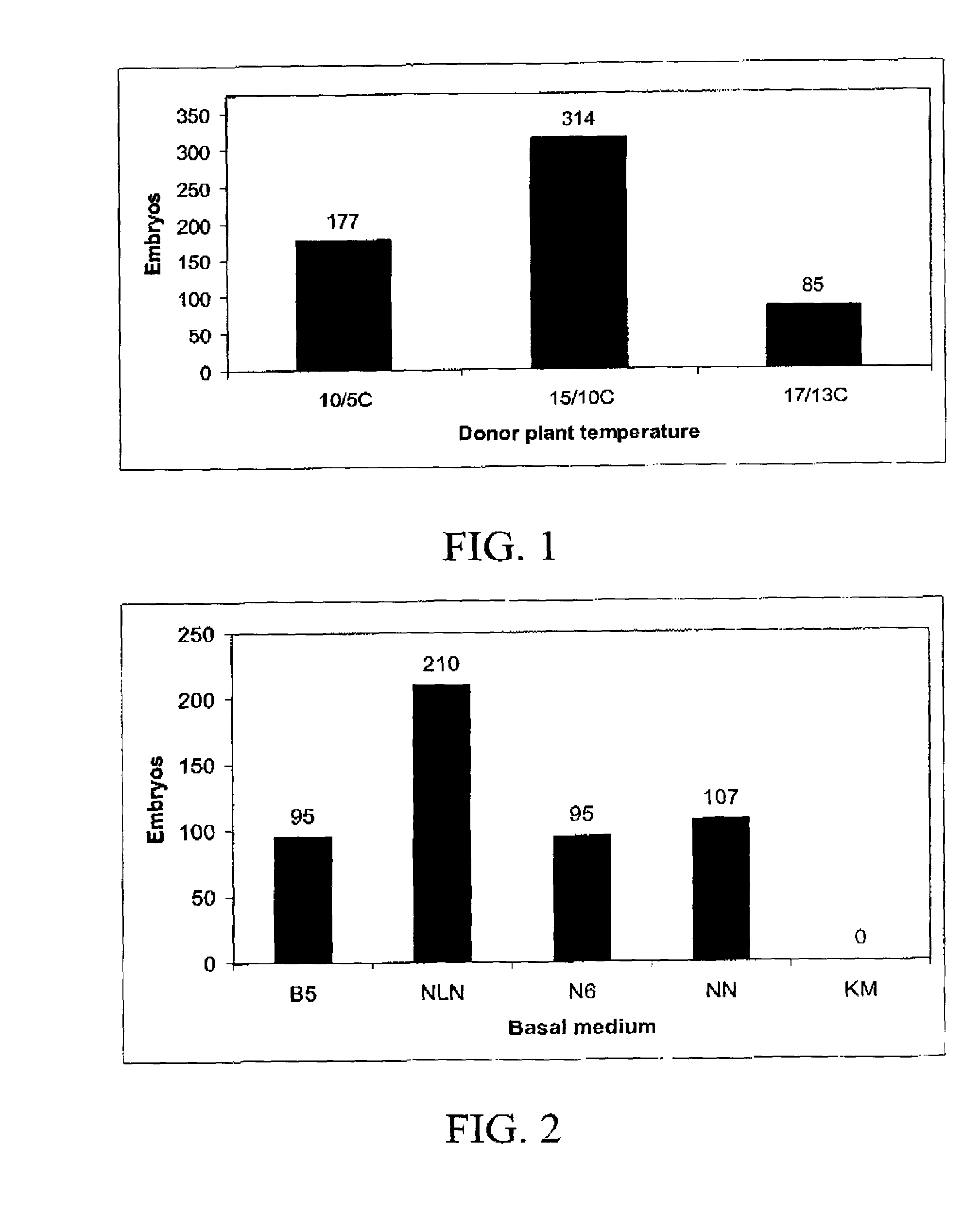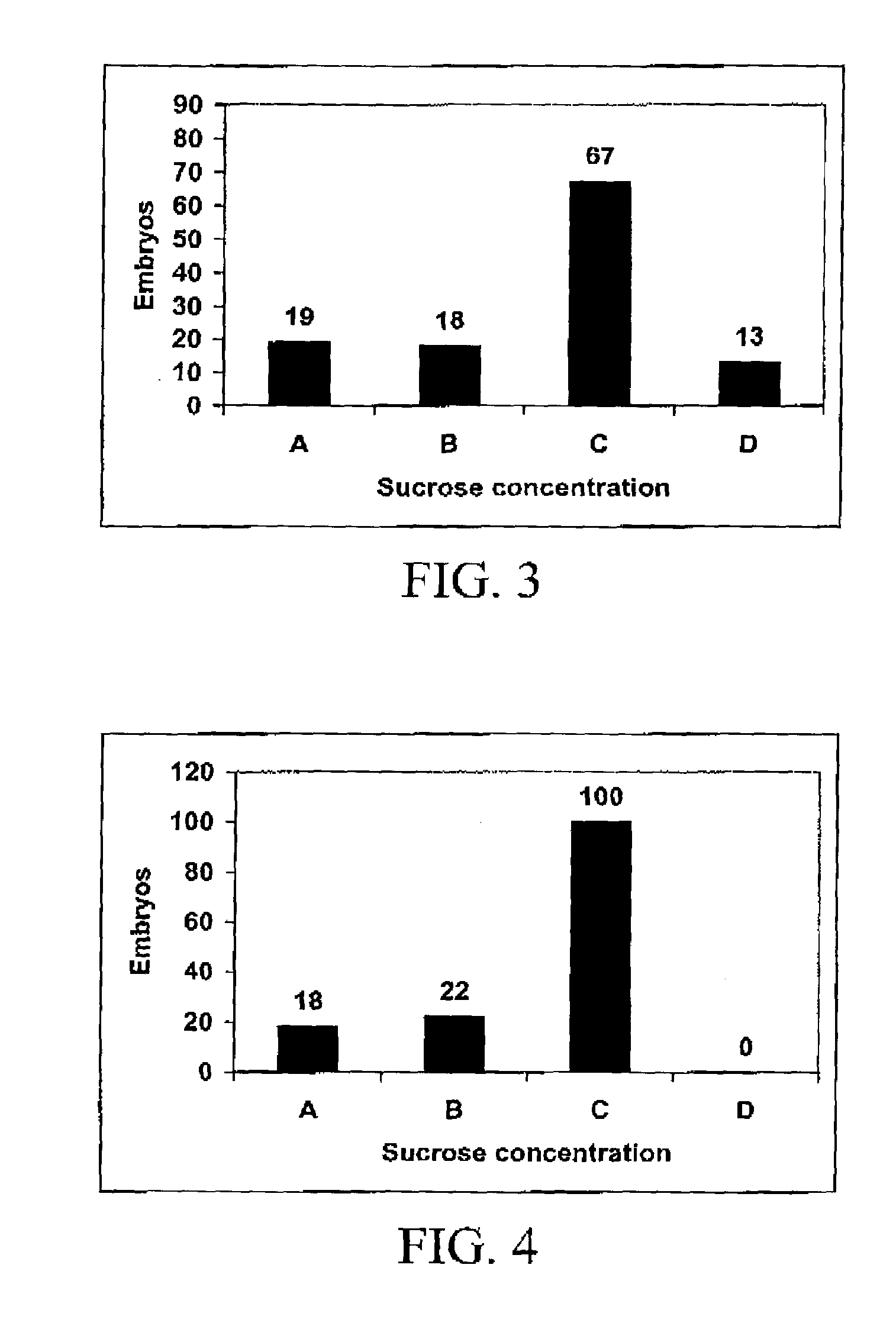Methods for producing microspore derived doubled haploid apiaceae
a technology of apiaceae and microspores, applied in the field of biotechnology, can solve the problems of limited use outside, large number of albino plants, impractical approach, etc., and achieve the effects of rapid selection, improved composition and agronomic performan
- Summary
- Abstract
- Description
- Claims
- Application Information
AI Technical Summary
Benefits of technology
Problems solved by technology
Method used
Image
Examples
example 1
Determination of Fennel Donor Plant Growth Temperature Requirements
[0075]Donor plants for isolated microspore culture were prepared as follows. Seeds were placed on a wetted filter paper in a Petri plate, wrapped with parafilm and placed in the dark (24° C.) for 3-5 days to germinate. Six-inch pots were filled with RED-EARTH™ soil-less mix containing approximately 1 g of slow release fertilizer (14-14-14—Nutricote). The mixture was thoroughly soaked with water and one germinated seed was placed in each pot. Pots were placed in a lighted growth cabinet (20 / 15° C., 16 h photoperiod, 400 μmol m−2s−1) and watered three times weekly with 0.35 g / L of 15-15-18 (N-P-K) fertilizer. After approximately six weeks, growth cabinet temperatures were adjusted to a day / night temperature regime of 10 / 5° C. Approximately six weeks later, a selection of donor plants that are to be maintained at the 15 / 10° C. or 17 / 13° C. temperatures were moved to other growth cabinets set for these conditions.
[0076]R...
example 2a
Determination of the Optimal Basal Medium Composition for Culture of Fennel Microspores
[0077]Several basal media were compared for fennel microspore embryogenesis. Donor plants for microspore culture were grown as described herein. Flower buds were measured and buds in the range of 1-3 mm were put into Lipshaw baskets. The Lipshaw baskets were immersed for one minute in 70% ethanol in a sterile beaker and placed on a shaker. After one minute, the ethanol was removed and the baskets containing the buds were rinsed with sterile water. The Lipshaw baskets were immersed for 15 min in 6% sodium hypochlorite in a sterile beaker placed on a shaker. After 15 min, the sodium hypochlorite was removed by three 5-min washes with sterile water. The buds were removed from the Lipshaw baskets with sterile forceps and placed in a mortar with 5 mL of half-strength Gamborg 135 medium with 13% sucrose. The buds were gently crushed with a pestle, and the resulting suspension was filtered through a 44 μ...
example 2b
Determination of the Optimal Basal Medium Composition for Culture of Caraway Microspores
[0078]Donor plants for microspore culture were grown as described herein. Plants were thinned to one or two plants per pot. Flower buds were selected and put into Lipshaw baskets. The Lipshaw baskets were immersed for one minute in 70% ethanol in a sterile beaker and placed on a shaker. After one minute, the ethanol was removed and the baskets containing the buds were rinsed with sterile water. The Lipshaw baskets were then immersed for 15 min in 6% sodium hypochlorite in a sterile beaker placed on a shaker. After 15 min, the sodium hypochlorite was removed by three 5-min washes with sterile water. The buds were removed from the Lipshaw baskets with sterile forceps and placed in a mortar with 10 ml of wash medium. The buds were gently crushed with a pestle, and the resulting suspension was filtered through a 90 μm nylon screen cloth into a 50 mL sterile centrifuge tube. The mortar and pestle were...
PUM
 Login to View More
Login to View More Abstract
Description
Claims
Application Information
 Login to View More
Login to View More - R&D
- Intellectual Property
- Life Sciences
- Materials
- Tech Scout
- Unparalleled Data Quality
- Higher Quality Content
- 60% Fewer Hallucinations
Browse by: Latest US Patents, China's latest patents, Technical Efficacy Thesaurus, Application Domain, Technology Topic, Popular Technical Reports.
© 2025 PatSnap. All rights reserved.Legal|Privacy policy|Modern Slavery Act Transparency Statement|Sitemap|About US| Contact US: help@patsnap.com



